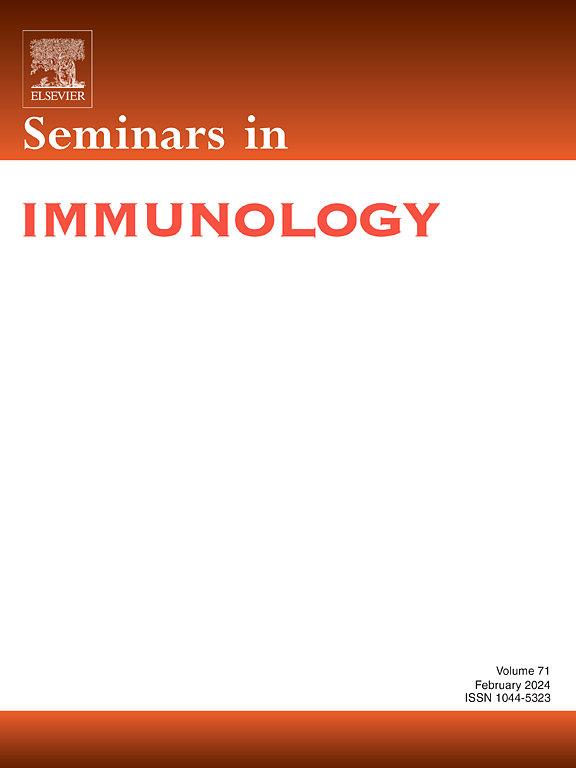内质网应激:免疫细胞调节和自身免疫性疾病的关键参与者
IF 7.4
2区 医学
Q1 IMMUNOLOGY
引用次数: 0
摘要
内质网(ER)是一种大型细胞器,存在于所有真核生物中,对细胞的正常功能至关重要。这种功能包括蛋白质折叠和质量控制、翻译后修饰、脂质调节和细胞内钙的储存等。这些不同的过程对于维持蛋白质组的稳定性至关重要。因此,在应激状态下需要建立一个强大的监控系统,以确保细胞的稳态。应激源可能来自细胞环境,包括营养匮乏、缺氧和低 pH 值,也可能来自细胞内的内源性信号,如新陈代谢挑战和蛋白质生产需求增加。当细胞平衡被这些诱因之一改变时,ER 的主要功能就会发生变化,导致折叠错误的蛋白质积累。这些受损的蛋白质会触发折叠蛋白反应(UPR)途径的激活。这种反应旨在通过诱导恢复细胞平衡的复杂程序来减轻ER压力。然而,持续的ER压力会改变UPR反应,使其信号从促进存活转变为触发重编程或消除受影响细胞的途径。本文章由计算机程序翻译,如有差异,请以英文原文为准。
Endoplasmic reticulum stress: A key player in immune cell regulation and autoimmune disorders
The endoplasmic reticulum (ER) is a large organelle, found in all eukaryotes, that is essential for normal cellular function. This function encompasses protein folding and quality control, post-translational modifications, lipid regulation, and the storage of intracellular calcium, among others. These diverse processes are essential for maintaining proteome stability. Therefore, a robust surveillance system is established under stress to ensure cell homeostasis. Sources of stress can originate from the cellular environment, including nutrient deprivation, hypoxia, and low pH, as well as from endogenous signals within the cell, such as metabolic challenges and increased demands for protein production. When cellular homeostasis is altered by one of these triggers, ER primary functions are altered which leads to the accumulation of misfolded proteins. These impaired proteins trigger the activation of the Unfolded Protein Response (UPR) pathway. This response aims at reducing ER stress by implementing the induction of complex programs to restore cell homeostasis. However, extended ER stress can modify the UPR response, shifting its signals from promoting survival to triggering pathways that reprogram or eliminate affected cells.
求助全文
通过发布文献求助,成功后即可免费获取论文全文。
去求助
来源期刊

Seminars in Immunology
医学-免疫学
CiteScore
11.40
自引率
1.30%
发文量
50
审稿时长
89 days
期刊介绍:
Seminars in Immunology is a specialized review journal that serves as a valuable resource for scientists in the field of immunology. The journal's approach is thematic, with each issue dedicated to a specific topic of significant interest to immunologists. It covers a wide range of research areas, from the molecular and cellular foundations of the immune response to the potential for its manipulation, highlighting recent advancements in these areas.
Each thematic issue is curated by a guest editor, who is recognized as an expert in the field internationally. The content of each issue typically includes six to eight authoritative invited reviews, which delve into various aspects of the chosen topic. The goal of these reviews is to provide a comprehensive, coherent, and engaging overview of the subject matter, ensuring that the information is presented in a timely manner to maintain its relevance.
The journal's commitment to quality and timeliness is further supported by its inclusion in the Scopus database, which is a leading abstract and citation database of peer-reviewed literature. Being indexed in Scopus helps to ensure that the journal's content is accessible to a broad audience of researchers and professionals in immunology and related fields.
 求助内容:
求助内容: 应助结果提醒方式:
应助结果提醒方式:


